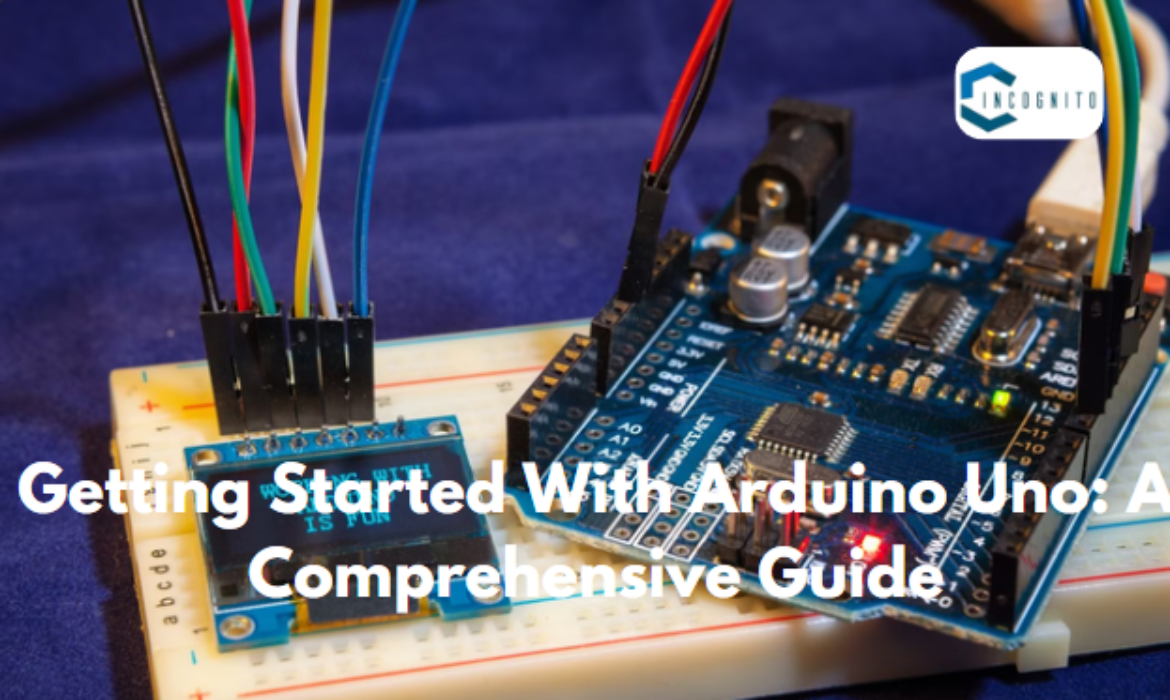
Introduction
Welcome to the world of the Arduino Uno! Whether you are a tech lover, an educator looking to propel understudies, or an exchange capable of indicating improvement, the Arduino Uno offers unending conceivable results. This guide will walk you through the nuts and jolts of setting up and programming your Arduino Uno, breaking complex concepts into clear steps.
Let’s dive in and explore the stimulating space of Arduino!
What is an Arduino Uno?
Arduino Uno may well be a microcontroller board based on the ATmega328P. It’s an adaptable and user-friendly arrangement for making a grouping of electronic wonders. The board highlights 14 advanced input/output pins, 6 simple inputs, a 16 MHz quartz precious stone, a USB connection, a control jack, an ICSP header, and a reset button. It’s a culmination for tenderfoots and specialists alike, advertising a portal to the intriguing world of gadgets and programming.
Why select the Arduino Uno?
- For Tech Devotees:
The Arduino Uno gives a hands-on approach to learning and testing with gadgets and programming. From building basic drive circuits to making complex IoT gadgets, the conceivable outcomes are boundless. - For Teachers:
The Arduino Uno is an amazing instructive apparatus. It makes a difference when understudies learn the basics of gadgets, coding, and designing through down-to-earth ventures and experiments. - For trade professionals:
Within the trade world, the Arduino Uno can be used for prototyping, robotization, and item advancement. It’s a cost-effective way to bring imaginative thoughts to life rapidly.
Getting Begun with Arduino Uno
Step 1: Assemble Your Supplies
Sometime recently, you’ll require the following:
- Arduino Uno board
- USB cable
- Computer with internet access
- Breadboard
- Jumper wires
- Essential electronic components (LEDs, resistors, sensors, etc.)
- Soldering Tools
Step 2: Introduce the Arduino IDE.
The Arduino Coordinates Improvement Environment (IDE) is the computer programme you’ll use to compose and transfer code to your Arduino board. Download and introduce the IDE from the official Arduino site.
Step 3: Interface your Arduino Uno
Interface your Arduino Uno to your computer using the USB cable. The control driven on the board ought to light up, demonstrating it’s fueled.
Step 4: Configure the Arduino IDE.
- Open the Arduino IDE and follow these steps:
- Select your board: Go to Devices > Board > Arduino/Genuino Uno.
- Select your port. Go to Devices > Harbour and select the harbor that your Arduino is associated with.
Step 5: Transfer Your to begin with Portray
- A sketch is the title Arduino uses for a programme. Let’s transfer a basic Blink outline to form a driven flicker on your Arduino board.
- Open the Arduino IDE.
- Go to File > Cases > 01.Basics > Squint.
- Tap the transfer button (a bolt indicating the correct). The RX and TX LEDs on your board ought to squint, demonstrating communication between your computer and the Arduino.
- After a couple of minutes, the message DoneUploading will show up within the IDE. The onboard Driven (associated with stick 13) ought to begin flickering.
Congrats! You’ve effectively transferred your to begin with Arduino sketch.
Investigating Arduino ventures
Basic Driven Circuit
- One of the only and most fulfilling ventures is making a driven circuit. Hereâs how:
- Connect an LED to pin 13 and GND.
- Adjust the flicker outline to alter the squint rate.
- Transfer the altered outline and watch the changes.
Temperature Monitoring System
- Make a basic temperature-observing framework employing a temperature sensor (just like the LM35) and the serial screen within the Arduino IDE.
- Interface the LM35 sensor to the Arduino (VCC, GND, and simple stick).
- Type in an outline to study the sensor information and show it on the serial screen.
- Transfer the outline and open the serial screen to see the temperature readings.
Smart Home Robotization
- Coordinated the Arduino Uno with sensors and actuators to make a basic domestic computerization framework. For instance, you’ll be able to use a movement sensor to turn on lights naturally.
- Interface a movement sensor and hand-off module to the Arduino.
- Type in an outline to control the lights based on sensor input.
- Transfer the portrayal and test your shrewd domestic setup.
To know more about Arduino Uno
Online Assets
There are various online assets to help you learn and develop with the Arduino Uno. A few important sources incorporate:
- Arduino Official Website
- Instructables
- Arduino Forum
Community and collaboration
Connect to the dynamic Arduino community. Lock in at gatherings, go to workshops, and collaborate on ventures. Sharing information and involvement can lead to inventive thoughts and arrangements.
Progressed Ventures
Once you’re comfortable with the essentials, challenge yourself with progressed ventures like:
- Building an automated arm
- Making an IoT climate station
- Creating a keen water system framework
Conclusion
Arduino Uno is more than just a microcontroller; it’s a door to imagination, development, and learning. Whether you’re a tech devotee, teacher, or commerce proficient, the Arduino Uno offers devices to bring your thoughts to life. So, snatch your Arduino Uno and begin investigating the perpetually conceivable outcomes nowadays!
For more point-by-point instructional exercises and venture thoughts, check out this comprehensive guide on the Arduino Uno.
Happy tinkering!



